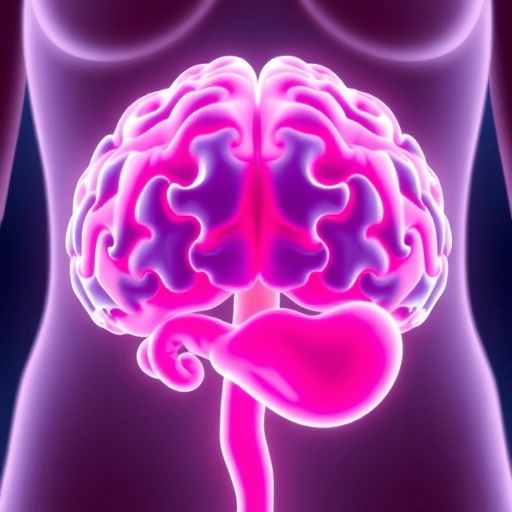Necrotizing enterocolitis (NEC) remains one of the most ominous challenges confronting neonatal intensive care units worldwide, recognized as the foremost cause of mortality attributable to gastrointestinal disease in premature infants. Despite advances in neonatal care, NEC continues to impose not only acute, life-threatening complications but also long-term sequelae that extend far beyond the gastrointestinal tract. Increasingly, the intersection between intestinal pathology and subsequent neurodevelopmental impairment commands attention, shedding light on a complex gut-brain axis influenced by inflammatory cascades instigated during NEC.
NEC’s multifactorial pathogenesis complicates therapeutic approaches, involving a tangled interplay of immature immune responses, intestinal barrier dysfunction, microbial dysbiosis, and ischemic injury. The neonatal intestine, particularly in preterm infants born before full development of mucosal defenses, is uniquely susceptible to bacterial translocation and exaggerated inflammatory responses. In these vulnerable hosts, necrosis of the intestinal wall progresses rapidly to systemic inflammatory states, often culminating in multiorgan dysfunction that includes damage to the developing brain.
Within the neonatal brain, the consequences of NEC-related systemic inflammation manifest as a constellation of neurodevelopmental deficits encompassing cognitive delays, motor impairments, and sensory disturbances that may persist throughout life. The emerging concept that NEC indirectly induces brain injury challenges the prior paradigm that viewed intestinal damage and neurological outcomes as discrete phenomena. Instead, the pathophysiology reveals a gut-brain ConNECtion mediated primarily by inflammatory signaling molecules, immune cell infiltration, and blood-brain barrier compromise.
Central to the gut-brain axis hypothesis is the role of pro-inflammatory cytokines such as tumor necrosis factor-alpha (TNF-α), interleukin-6 (IL-6), and interleukin-1β (IL-1β), which surge systemically in response to intestinal inflammation during NEC episodes. These soluble mediators cross or disrupt the integrity of the neonatal blood-brain barrier, fostering microglial activation and neuroinflammation. Experimental models demonstrate that this neuroinflammatory milieu contributes to white matter injury, particularly pronounced in periventricular regions critical for cognitive and motor development.
Additionally, hypoxia-ischemia secondary to systemic shock and coagulopathy during severe NEC exacerbates brain injury by depriving the fragile neonatal cerebrum of oxygen and nutrients. Such insults often coincide with inflammatory processes, leading to synergistic damage and impaired neuronal maturation. Neuroimaging in affected infants frequently reveals periventricular leukomalacia and ventriculomegaly, radiological hallmarks correlating with adverse neurodevelopmental outcomes.
The complexity of NEC-induced brain injury underscores the imperative to integrate neuroprotective strategies within NEC management protocols. Current approaches largely focus on prompt surgical intervention and supportive care to mitigate intestinal necrosis, but emerging evidence advocates for adjunctive therapies targeting inflammatory pathways. Agents aimed at modulating cytokine responses or enhancing blood-brain barrier integrity are in nascent stages of investigation, holding promise for preserving neurodevelopmental trajectories.
Moreover, the relationship between the developing neonatal microbiome and brain maturation has garnered significant interest. Dysbiosis during NEC disrupts gut microbial communities, altering metabolite production and immune education. Such disturbances may indirectly influence brain development by modulating systemic inflammation and neuroimmune signaling. Probiotic therapies and prebiotic supplementation represent potential avenues to restore microbial homeostasis and attenuate the gut-derived inflammatory cascade.
Nutritional strategies also play a critical role in NEC prevention and possibly in mitigating neurological injury. Human breast milk, rich in immunomodulatory factors, growth hormones, and protective oligosaccharides, has been shown to reduce NEC incidence and severity significantly. These bioactive components not only support gut integrity but may exert neuroprotective effects by dampening systemic inflammation and promoting neuronal growth and differentiation.
The intertwining of gastrointestinal insult and neurodevelopmental impairment emphasizes the need for multidisciplinary surveillance of NEC survivors. Pediatric care must extend beyond the neonatal period to include developmental assessments and early interventions that address motor delay, cognitive dysfunction, and behavioral challenges. Early therapeutic engagement capitalizes on neuroplasticity, offering the best opportunity to improve functional outcomes despite earlier injury.
Ongoing research continues to unravel the molecular underpinnings of NEC-associated neurodevelopmental injury. Advances in high-resolution neuroimaging, biomarker discovery, and cellular modeling are elucidating precise pathways linking intestinal necrosis to brain inflammation and injury. Such insights promise to refine prognostic tools and tailor individualized approaches to therapy in this vulnerable population.
Importantly, the gut-brain ConNECtion serves as a paradigm for understanding how peripheral organ injury can propagate central nervous system damage during critical developmental windows. Lessons gleaned from NEC-related brain injury may extend to other neonatal inflammatory conditions, broadening the scope of neonatal neuroprotection and potentially informing adult neuroinflammatory disease research.
Future clinical trials that encompass both intestinal outcomes and neurodevelopmental endpoints will be vital to evaluating the efficacy of novel interventions. The integration of anti-inflammatory agents, microbiome modulation, and neuroprotective therapies requires rigorous testing to establish safety profiles and optimize timing relative to NEC onset and progression.
In summary, necrotizing enterocolitis transcends its initial characterization as a severe gastrointestinal emergency to emerge as a complex systemic disease with profound implications for brain development. Recognizing and addressing the gut-brain ConNECtion reframes NEC from a solely intestinal concern to a critical neurodevelopmental nexus, compelling clinicians and researchers alike to pursue comprehensive management strategies that mitigate both immediate and lifelong consequences for premature infants.
Subject of Research: The developmental impact of necrotizing enterocolitis on the neonatal brain, focusing on the pathophysiological mechanisms linking intestinal inflammation to brain injury and neurodevelopmental outcomes.
Article Title: The gut-brain ConNECtion: exploring the developmental impact of necrotizing enterocolitis on the neonatal brain.
Article References:
Lacey, M., Jim, C. & Niño, D.F. The gut-brain ConNECtion: exploring the developmental impact of necrotizing enterocolitis on the neonatal brain. Pediatr Res (2025). https://doi.org/10.1038/s41390-025-04092-z
Image Credits: AI Generated




